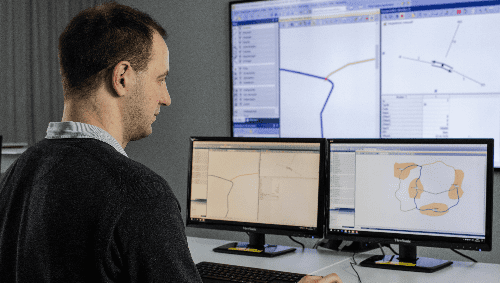
PTV Visum - Nested Demand Modelling (TR-T0120)
Expand your knowledge of demand modelling with the Nested Demand Model in PTV Visum
-
Short Description
The nested logit approach, which underpins the Nested Demand Model, represents behavioural choices (typically trip distribution, mode choice and time of the day choice) in hierarchical model structures. The appropriate hierarchy of choices must be determined by the relative sensitivities to the utilities of travel. Choices made higher in the hierarchy act as constraints on those made later further down the hierarchy. The calculation of utilities starts at the bottom of the hierarchy. The resulting log sums are passed on to the next level in the hierarchy adding one more choice at each level on the way up the hierarchy.
This type of demand modelling is standard practice in the UK and is currently being used by the DfT’s own National Transport Model with PTV Visum. This is therefore an ideal approach for modelling that is in line with DfT’s and WebTAG recommendations.
Over the course of the training, you will define some procedure steps yourself within the framework of this exercise. The steps and the context within the calculation will be explained. Afterwards we will calculate the demand by using the absolute model form, i.e. the calculation is based on demographic and structural data of zones.
-
Course Level
Advanced
-
Target Group
This course provides experienced users with a deeper insight into TAG-compliant variable demand modelling. It is aimed at users who already have basic knowledge of variable demand modelling and who want to extend it to PTV Visum.
-
Prerequisites
You have obtained practical project experience in TAG compliant variable demand modelling and successfully participated in our course „Introduction to macroscopic modelling with PTV Visum“ (TR-T0101) or have comparable knowledge of demand modelling in PTV Visum.
-
Duration
1 Day
Due to organizational and local conditions, the duration of the course may vary. Please note the details of your chosen course date before booking.
-
Contents
- Demand model with the Nested Logit approach
- Principles and properties of the procedure
- Choice model structure
- Utility functions
- Scaling parameters
- Gap calculation and model iteration
- Matrix operations
This one-day course will introduce you to the principles of the multinomial nested logit model in PTV Visum, it’s data structure and model hierarchy. The subjects of model segmentation, data supply, behavioural choices, relative sensitivities will be discussed and practiced on a training Nested Demand model.
-
Next Course Dates
The courses below are the next scheduled course dates. Check our training calendar to see all available dates or contact us if you do not find a suitable date.
Related Courses:
-
 Basic
BasicPTV Visum - Introduction to Macroscopic Network Modelling
-
 Advanced
AdvancedPTV Visum - Creating a Macroscopic 4-Step Transport Model
-
 Advanced
AdvancedPTV Visum - Demand Model Visem
-
 Advanced
AdvancedPTV Visum - Demand Model Freight Modelling